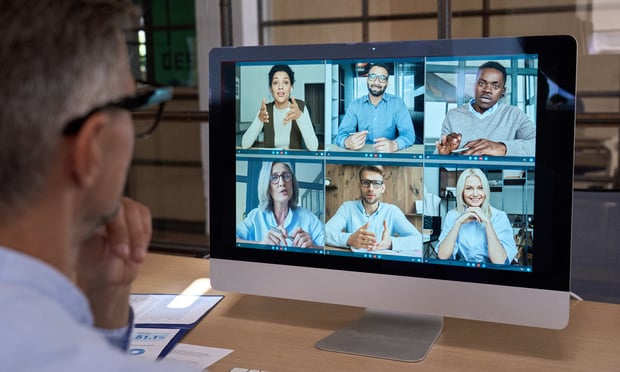Insurers Ask Feds For Auto ?Black Box' Use Rule
By Daniel Hays
NU Online News Service, Feb. 26, 3:33 p.m. EST?An insurance trade group is asking for federal requirements on automobile "black boxes" known as EDRs (event data recorders), so the machines report human as well as mechanical factors involved in an accident.
The request from the National Association of Independent Insurers in Des Plaines, Ill., was made in a letter to the U.S. Department of Transportation after the National Highway Traffic Safety Administration asked for public comment on the concept of black box standards.
NAII said it would like to see EDR data available to improve accident reconstruction and the allocation of negligence or responsibility among the drivers and other parties involved in a collision. It suggested laws on the subject should be made at the state level.
Susan McKenna, an NAII spokesperson said, referring to the NHTSA, "We want them to develop black boxes to collect data and don't want them inhibited by privacy issues."
Terry Tyrpin, NAII senior vice president, insurance and research services said there have been no parameters for EDRs and the idea was to create a baseline for manufacturers. Most use to date has been limited to auto manufacturers, he said.
He said NAII's reading of the NHTSA's request for comment is that the agency is most concerned with using EDR data "to plow it back into engineering and to enhance traffic safety."
Mr. Tyrpin said NAII gave NHTSA its view that EDR uses should not be limited to car manufacturers and the safety agency and that they "Ought to be thinking outside the box."
The agency, he said should be "recognizing privacy and ownership issues and that there may be other stakeholders."
At the moment, he said black boxes only record what manufacturers program them to and the federal agency seems to view their use only in terms of safety engineering.
"EDRs can and should play a major role in advancing motor vehicle safety research," Mr. Tyrpin said. "With that goal in mind, we recommend that EDR engineering be mainstreamed so that information systems' technicians, regardless of their industry or field, have the skill sets to service EDRs or at least download and interpret its data.
"NAII believes that there could be a much broader use of EDR data in the future and accordingly, a demand for greater access."
In its letter to DOT, NAII recommended that standards for EDRs be flexible enough to address any manufacturer's concerns and also encouraged the private sector to become involved, fostering greater competition.
"NAII urges your agency to move forward on the task of developing data elements and retrieval standards for EDRs," Mr. Tyrpin wrote. "EDR data elements should be created with proper attention given to uses beyond the scope of safety, engineering or research. In the interest of achieving greater regulatory flexibility it would appear proper to also investigate a state role in setting standards for collection, storage and rights to access EDR data."
The NAII said that a legislative solution to EDR data collection and access should be crafted at the state level. The group said that is the governmental tier where many fundamental motor vehicle and driver compliance programs are currently administered.
The NAII also said it agreed with the Insurance Institute for Highway Safety's
recommendations for EDRs, recognizing the expertise IIHS's extensive experience in crash-testing motor vehicles over the last several decades.
"As we understand it, the data captured by the EDR could be conveyed to data transmission hardware in a vehicle, such as an On-Star system and others like it. The system then relays the report of a collision or the likelihood of an injury to an outside emergency service unit or network," explained Mr. Tyrpin.
"If data elements collected by the EDR could help a rescue team or paramedics better assess crash-related injuries or the likelihood of injuries, NAII trusts the agency will be receptive to guidance from the automatic crash notification systems and other related medical assistance organizations on just which data elements are critical," he said.
Mr. Tyrpin noted that, "Under the tort liability system rules, it is often difficult to settle issues of fact relating to an accident. EDR recorded data elements could help accident investigators and claim adjusters separate fact from fiction and lead to more equitable decisions that affect litigation and liability arising from a crash case. The result could be a reduction in lawsuits arising out of personal
injuries in a crash."
He added that many kinds of factual issues become relevant particularly when a personal injury suit is filed in an accident. EDR data elements that could provide factual detail relating to the circumstances immediately prior to a crash.
EDRs, he said could report seatbelt usage at time of crash, speed or direction of vehicle, braking action or lack thereof, whether the vehicle navigation lights were illuminated.
It could also show position of the gear selector and whether a special power distribution feature such as traction control, an active handling system or four wheel drive was in use.
Additionally, it could record whether a turn signal indicator had been activated prior to the crash, exact time at which a collision/occurrence took place and the last action/position of the driver before the collision.
Mr. Tyrpin said NAII anticipates that police and prosecutors might be interested in evaluating the use of EDR data to corroborate witness accounts.
NAII said it is encouraging NHTSA to continue its dialogue with all EDR stakeholders and to expand the participants in its EDR Working Group to get even broader viewpoints.
"NHTSA's goal should be to promote more inclusion of state level governmental and private sector interests so that the debate on these issues is as well-rounded and uninhibited as possible," Mr. Tyrpin concluded.
The NAII said its 715 member property-casualty insurance companies write more than $98 billion in annual premium or more than 31 percent of the nation's p-c coverage.
Want to continue reading?
Become a Free PropertyCasualty360 Digital Reader
Your access to unlimited PropertyCasualty360 content isn’t changing.
Once you are an ALM digital member, you’ll receive:
- Breaking insurance news and analysis, on-site and via our newsletters and custom alerts
- Weekly Insurance Speak podcast featuring exclusive interviews with industry leaders
- Educational webcasts, white papers, and ebooks from industry thought leaders
- Critical converage of the employee benefits and financial advisory markets on our other ALM sites, BenefitsPRO and ThinkAdvisor
Already have an account? Sign In Now
© 2024 ALM Global, LLC, All Rights Reserved. Request academic re-use from www.copyright.com. All other uses, submit a request to [email protected]. For more information visit Asset & Logo Licensing.








